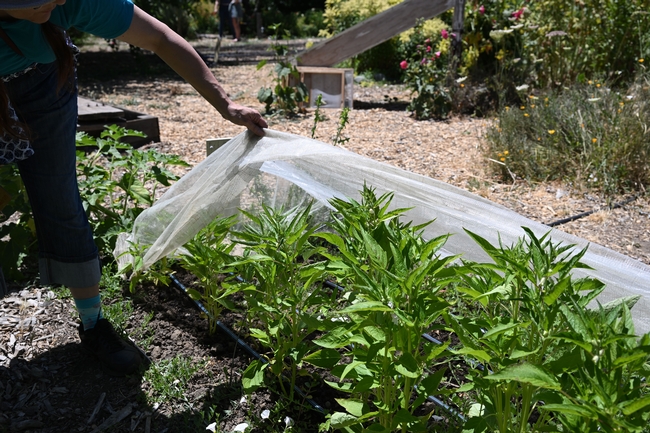In February we recognize Valentine's Day, President's Day, and Black History Month, but did you know it is also IPM month?! Join us in celebrating by learning more about integrated pest management (IPM), how you can use it in your everyday life, and the pest management resources and information offered by UC IPM.
What is IPM?
Integrated pest management (IPM) is a more sustainable, environmentally friendly method for managing pests like insects, diseases, weeds, and unwanted wildlife. IPM can be used by anyone: homeowners, tenants, farmers, gardeners, janitors, groundskeepers, professional landscapers and pest control operators, and more.
IPM focuses on the long-term management of pests through prevention and monitoring. This reduces pests reaching damaging levels and becoming difficult to control or requiring pesticide use. One way pests can be prevented outdoors is by providing plants with proper care (water, sunlight, and nutrients). You can prevent pests from coming indoors by sealing gaps around windows and doors. Monitor for pests using tools like sticky traps, or visual inspection.
Once a pest becomes a problem, it must be correctly identified so the correct management solution can be chosen. Many pests can be managed without the use of pesticides. In IPM, we often choose nonchemical solutions first:
- Biological control: the use of natural enemies—predators, parasites, pathogens, and competitors—to controlpests and their damage. Some examples of natural enemies include ladybeetles, lacewings, and spiders.
 Protective covers or netting can keep pests off plants. In IPM this is an example of physical or mechanical control. Photo by Krystle Hickman, UC IPM.
Protective covers or netting can keep pests off plants. In IPM this is an example of physical or mechanical control. Photo by Krystle Hickman, UC IPM. - Cultural control: practices that limit pests from establishing, reproducing, and living where they're not wanted. These practices can include increased cleanliness, proper storage of food, good plant care, and well-maintained landscape irrigation systems.
- Mechanical or physical control: kill a pest directly, block pests out, or make the environment unsuitable for them. Examples include traps for rodents, mulches for weed management, and flyswatters for flying insects.
Pesticides can still be an important part of IPM, but they should be used in combination with nonchemical solutions for long-term management. Pesticides alone will not solve a pest problem or prevent pests from becoming a problem again later. When pesticides are needed, choose products that are less toxic. Less toxic pesticides are those that pose fewer risks to people, pets, the environment, and natural enemies like ladybeetles. Learn more about less toxic pesticides at https://ipm.ucanr.edu/QT/lesstoxicinsecticidescard.html.
Whether you are trying to control cockroaches in an apartment, weeds in the garden, or diseases on landscape plants, UC IPM has the tools and resources to help you using an IPM approach.
To learn more about integrated pest management, visit https://ipm.ucanr.edu/what-is-ipm/ or view our resources for managing specific home, garden, and landscape pests using IPM at https://ipm.ucanr.edu/PMG/menu.homegarden.html.

